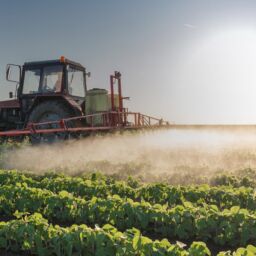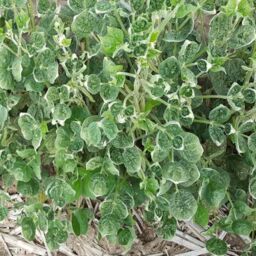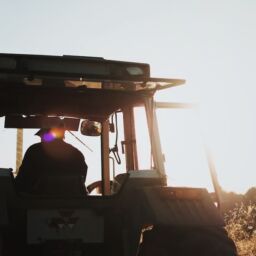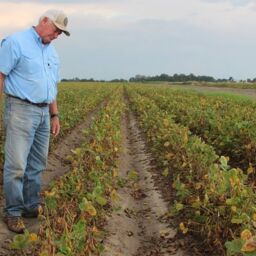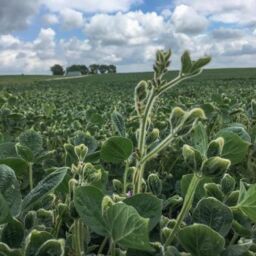Dicamba | Investigate Midwest | Jonathan Hettinger | April 14, 2020
In 2016, the U.S. Environmental Protection Agency approved Monsanto’s dicamba-based herbicide under a conditional two-year registration. The agency determined dicamba, a traditionally volatile herbicide, would no longer be allowed to be sprayed unless incidents of the pesticide harming other crops “are not occurring at unacceptable frequencies or levels.”
By 2018, farmers had filed more than 4,200 official complaints that alleged damage to at least 4.7 million acres of soybeans from the use of dicamba on Monsanto’s genetically engineered soybean and cotton plants.
But, in its Oct. 31, 2018 decision, the EPA re-approved the herbicide for another two years, failing to even mention the prerequisite of “unacceptable” off-target movement it had set in its initial approval.
The EPA’s failure to meet its own benchmark was unlawful and that decision should be vacated, a federal lawsuit filed by a coalition of farmers and conservationists alleges. The lawsuit is set to be heard via a video argument by the Ninth Circuit Court of Appeals in San Francisco on Tuesday, April 21.
Documents included as part of the lawsuit show that the EPA ignored its own scientists’ recommendations for a larger buffer zone around fields to protect endangered species and that Monsanto had dozens of off-target incidents during its testing of the herbicide. Many independent researchers also warned the EPA that its proposed label changes for 2018 would not be effective, documents show.
Monsanto, which was bought by Bayer in 2018, released soybean and cotton seeds genetically engineered to resist being sprayed with dicamba beginning in 2015. Dicamba herbicides sold by Monsanto and BASF were available for the 2017 growing season after the EPA’s registration. Each year since the herbicides were released, millions of acres of non-resistant soybeans, other crops and natural areas have been damaged by dicamba, according to pesticide experts.
2018 decision mooted out previous version of lawsuit
The lawsuit, originally filed to challenge the agency’s 2016 decision to approve dicamba, was already heard once by the Ninth Circuit Court in August 2018, but the case was mooted out by the EPA’s October 2018 decision to reapprove the herbicide for two years. As a result, the Ninth Circuit expedited this case to ensure it is heard before the EPA makes another registration decision later this year.
“They wriggled away before the court could decide these important issues,” said George Kimbrell, legal director for the Center for Food Safety, a nonprofit organization that works to protect human health in food. “That game is up.”
The EPA does not comment on pending litigation, an EPA spokesman said. Earlier this year, the EPA’s Inspector General said it will review the decision in the coming year.
Bayer spokeswoman Susan Luke said the EPA made an “informed science-based decision” based on an extensive review of all relevant science.
“The claims raised by the petitioners are baseless, and we believe the extensive body of science supporting the EPA’s registration decision will ultimately determine the outcome of this litigation,” Luke said in an email.
Luke said Bayer stands fully behind the XtendiMax product.
The lawsuit is focused on EPA’s decision for Bayer’s XtendiMax product, but any decision would be extended to BASF’s dicamba herbicide, called Engenia, and Corteva’s FeXapan as well.
Lawsuit could stop dicamba from being sprayed
Earlier this year, a Missouri jury awarded peach farmer Bill Bader $265 million in a lawsuit alleging that Monsanto and BASF knew their dicamba-based herbicides would drift and harm other crops. Hundreds of other farmers have filed similar lawsuits, but those civil lawsuits have no bearing on whether dicamba can be sprayed.
The lawsuit filed against the EPA could change that.
“Pesticide companies, right now, are only being held in check by tort claims and personal injury lawyers,” said Nathan Donley, a senior scientist with the Center for Biological Diversity, who is also suing the EPA. Donley said this is true for both glyphosate cancer lawsuits and dicamba drift. “EPA keeps making horrible decisions, and people are having to seek damages from something that could’ve been avoided in the first place.”
The federal lawsuit alleges that the agency violated the Federal Insecticide, Fungicide and Rodenticide Act, commonly referred to as FIFRA, by not having enough evidence to support its decision.
For the initial registration decision in 2016, the two volatility studies that Monsanto submitted to the EPA were a 9.6-acre test over cotton in Texas on June 8, 2015, and a 3.4-acre test over bare ground in Georgia on May 5, 2015, according to testimony in the Bader case. No tests were conducted over soybeans.
Volatility is when a herbicide moves off-target in the hours or days after spraying. Academic weed scientists say volatility is the main cause of crop damage from dicamba.
In making the 2018 decision, EPA required that Bayer and BASF conduct additional studies on volatility in field situations, how temperature affects volatility and the effect of off-target movement on non-target plants, including select sensitive tree/shrub/woody perennial species.
By requiring more data of the registrants, EPA did not meet its requirement under FIFRA to have “satisfactory” data, the lawsuit alleges.
Both companies insist dicamba does not move off-target when it is applied according to its label. Bayer has said that the majority of the complaints are due to off-label spraying, including not following wind requirements, and that dicamba has been blamed for damage caused by other pesticides and disease.
EPA determined dicamba could harm 322 species
The lawsuit also alleges the EPA violated the Endangered Species Act by not consulting with the U.S. Fish and Wildlife Service on whether dicamba would harm endangered species.
The Endangered Species Act was a particular sticking point in the herbicide’s registration, documents show. In 2016, the agency determined dicamba moving off of fields where it was applied and onto other crops and natural areas could affect 322 protected species of birds, mammals, reptiles, amphibians and plants.
During its 2012-2014 testing of M1691, an older version of XtendiMax, Monsanto had 73 off-target incidents with the herbicide, court documents show. Testimony in the Bader case showed that Monsanto “pulled back” its testing of XtendiMax in 2015 because the EPA was keeping its eye on those results.
However, rather than reaching out to the U.S. Fish and Wildlife Service for consultation as required by law, the agency determined that mitigation measures including nozzle requirements and a downwind buffer would mitigate the issue, the lawsuit alleges.
In the 2018 re-registration, the EPA found the off-target movement in the 2017 and 2018 growing seasons may have resulted in harm to off-target plants including ones that could harm endangered species. Again, the agency did not reach out to the Fish and Wildlife Service, but decided to take additional mitigation measures, including an omnidirectional buffer in counties where endangered species habitat exists, the lawsuit alleges.
At first, agency scientists recommended a 196-foot buffer, then a 443-foot buffer based on reviewing academic studies submitted by Bayer about XtendiMax’s propensity to move off-target, according to court documents.
On Oct. 11, 2018, Rueben Baris, who was overseeing the new label for the U.S. Environmental Protection Agency, wrote an email to two Bayer lobbyists that the new label was “still making progress,” according to court documents.
“But with all of the uncertainty on the Endangered Species side, there is still a lot of work left,” Baris wrote.
Less than three weeks later, the agency announced the new registration, which included the omnidirectional buffer. However, after a management review, the buffer was reduced to 57 feet, according to court documents.
FREE Consultation | 314-833-4826
Dicamba Drift Lawyers at Peiffer Wolf Carr & Kane are fighting on behalf of farmers and landowners to seek maximum compensation for the damages suffered due to Dicamba. If you suspect that your crops or plants have been damaged by dicamba, contact Peiffer Wolf Carr & Kane by filling out a Contact Form or by calling 314-833-4826 for a FREE Consultation.




